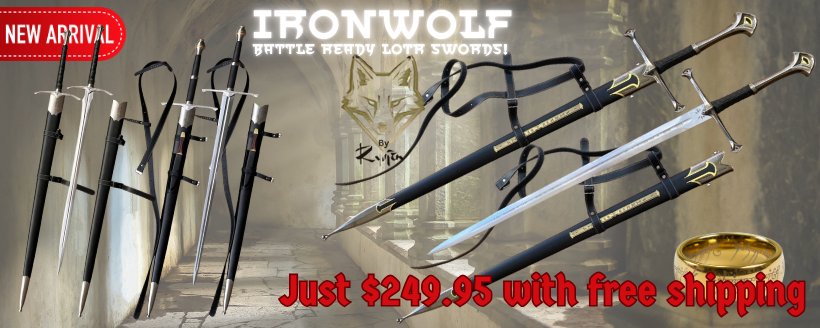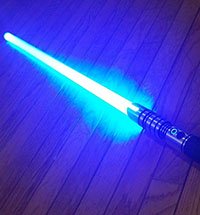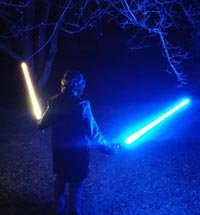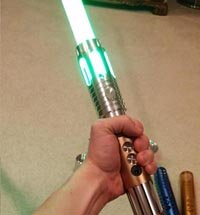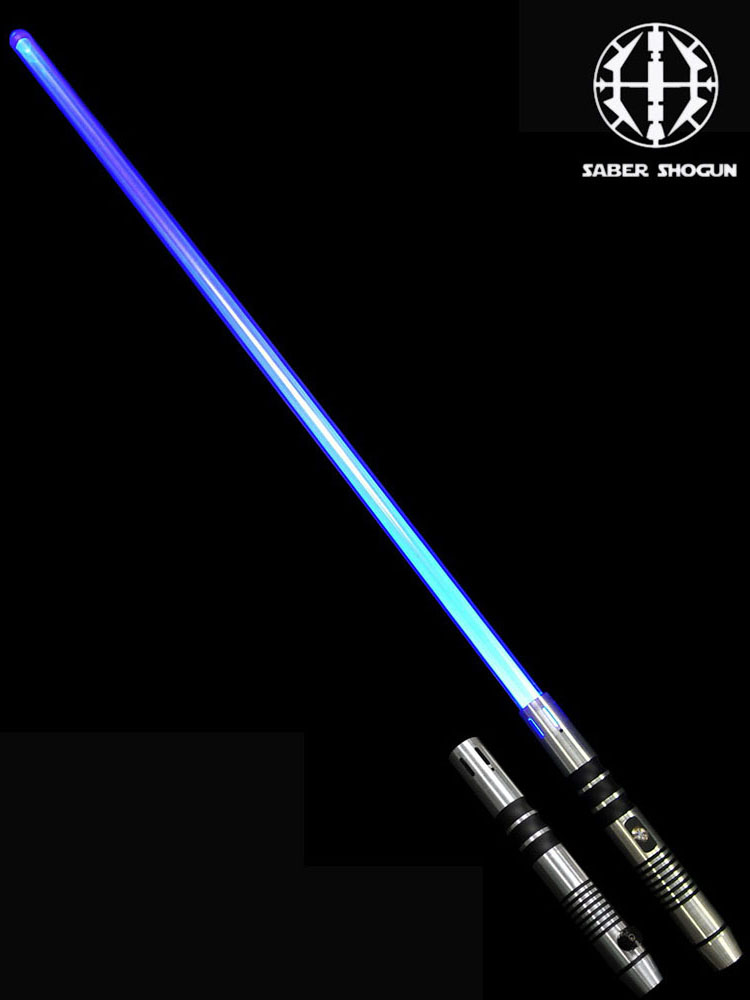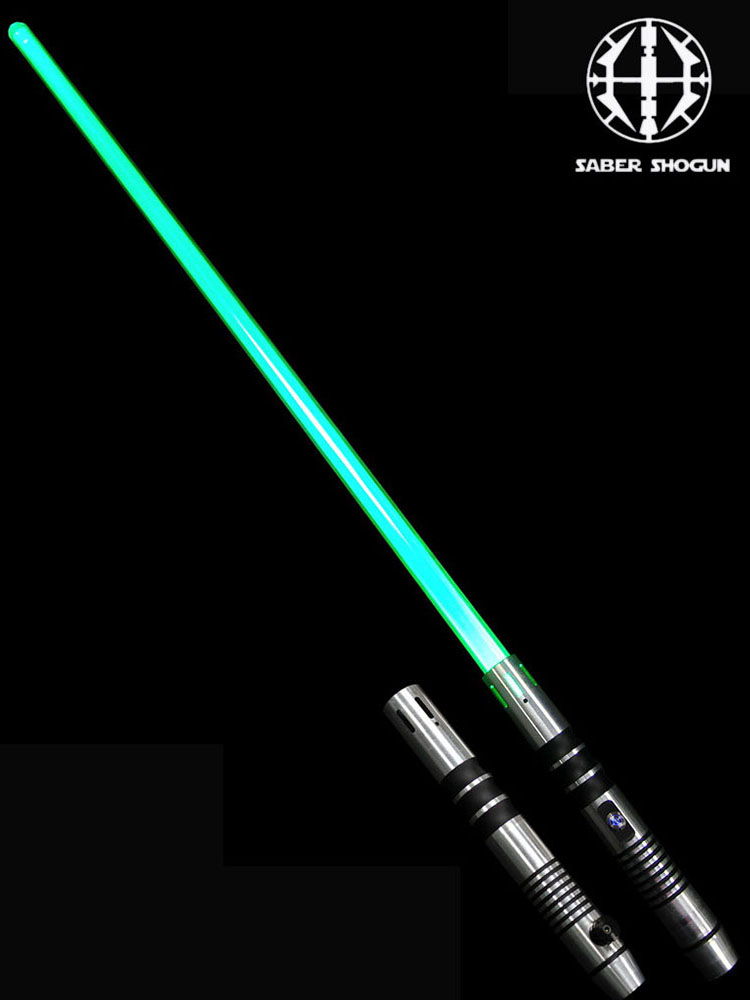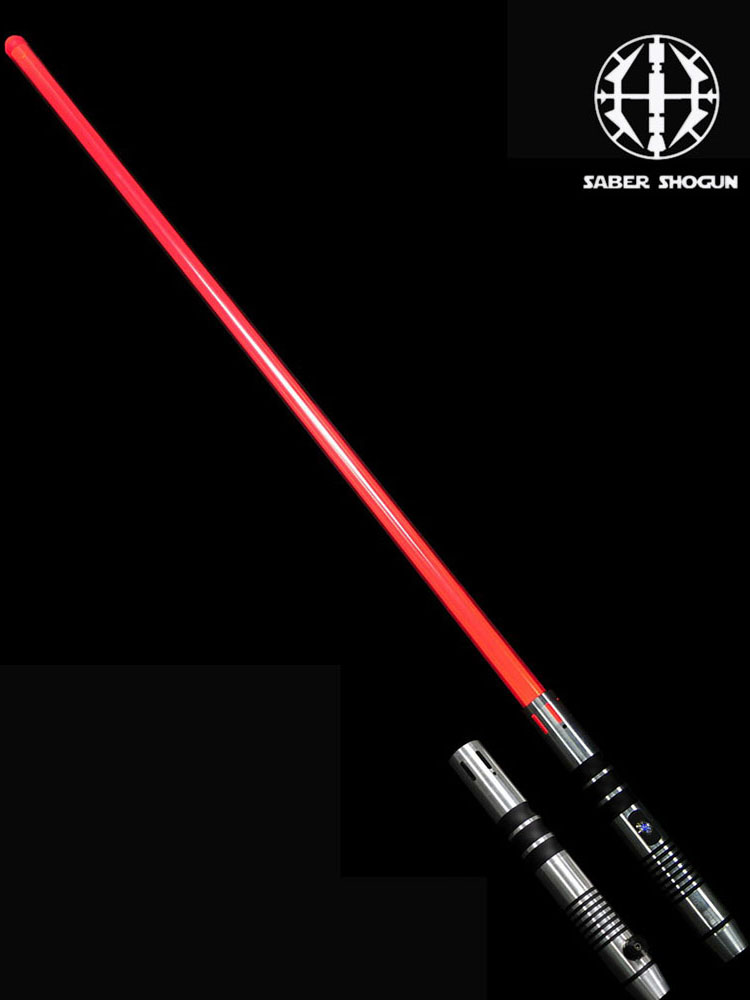Battle Ready Lightsabers
This article on battle ready lightsabers was written by Daniel Dacombe and edited by Paul Southren - both old school die hard Star Wars Fans..
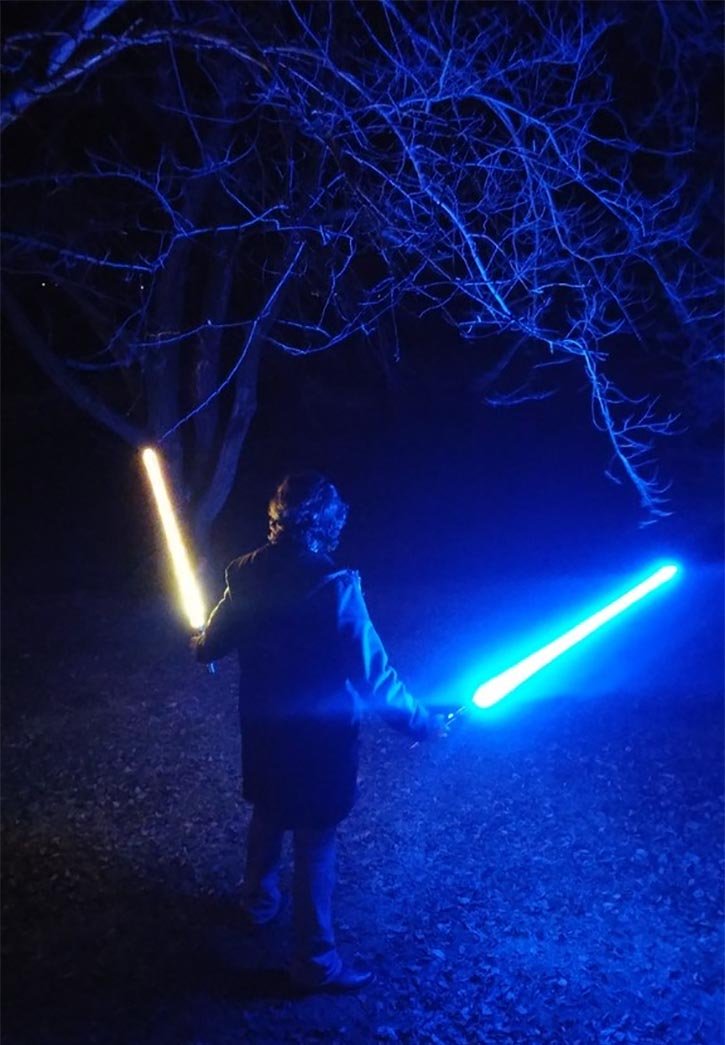

Since the release of the first Star Wars film in 1977, the fictional weapon known as the Lightsaber has captured the imaginations of children and adults around the world. Loosely based on a samurai’s katana (as Star Wars was inspired by Kurosawa's 1958 film The Hidden Fortress), a Lightsaber is a metal handle from which extends an energy sword capable of cutting through most matter with ease.
Only another Lightsaber can block a Lightsaber blade, and as a result Lightsaber duels feature prominently at the climax of many Star Wars films.
At once a piece of fantastic sci-fi technology and a mythic fantasy sword, few people have watched Star Wars films and not walked away wishing they too could wield the iconic weapon of the Jedi Order.
The LightSaber: a fictional History


The fictional history of the Lightsaber, as imagined by Star Wars creator George Lucas, is rooted in the history of the Jedi Order. The Jedi, a powerful group of intergalactic peacekeepers, relied on their ability to use the Force to protect the weak and fight tyranny throughout the galaxy.
The Force (an energy field that binds the galaxy together) allowed the Jedi to fight with incredible precision and power, though they tended to eschew clumsy weapons such as blasters. Instead, the Jedi preferred to rely on melee weapons – including early forms of what one day would become the iconic Lightsaber.
These early Lightsabers had an energy blade, but their handles were connected by a cable to a battery pack carried on the Jedi’s person. As technology advanced the battery pack was able to be fit inside the handle, leading to the current incarnation of the Lightsaber.

Samuel L. Jackson, who played Mace Windu apparently insisted on a purple lightsaber while George Lucas was not very keen. Read more over at screenjolt.com
A lightsaber is composed of several different (fictional) parts, but the most important of these is the kyber crystal. The kyber crystal acts as a focus for the Lightsaber’s energy, projecting the blade and determining its color.
While the “official” Jedi Lightsaber colors - the
ones that appear in the Star Wars films and cartoons – are blue and
green (and in one special case, purple), many other colors have been
seen in the novels, video games, and comics.
 Mace Windus' infamous purple lightsaber
Mace Windus' infamous purple lightsaberThe “unofficial” colors
include yellow, silver, orange, and black, and have been wildly popular
with fans. And of course, for those Jedi who turn to the Dark Side of the Force, there are the sinister red Lightsabers – wielded by Darth Vader, Kylo Ren, and other champions of evil.
In
reality, the original Lightsabers were constructed using old Graflex
camera handles with glued-on rubber strips. The energy blades were added
in post-effect using a film technique known as rotoscoping, and the
distinctive hum was created using old television and movie projector
sounds. The process was
done on a shoestring budget and relied heavily on the creativity of the props and editing departments.
Despite this perhaps ignoble beginning, the effect was spectacular – and the Lightsaber became something much more than the sum of its parts.
Toys, Toys, Toys
With the incredible popularity of the original Star Wars film (and, of course, the Lightsaber), children and adults the world over began playacting as though they had their hands on one of the epic energy sword.
While wooden broomsticks and cardboard wrapping paper tubes will do in a pinch, everyone was hoping for a more legitimate version – and the toy companies delivered.
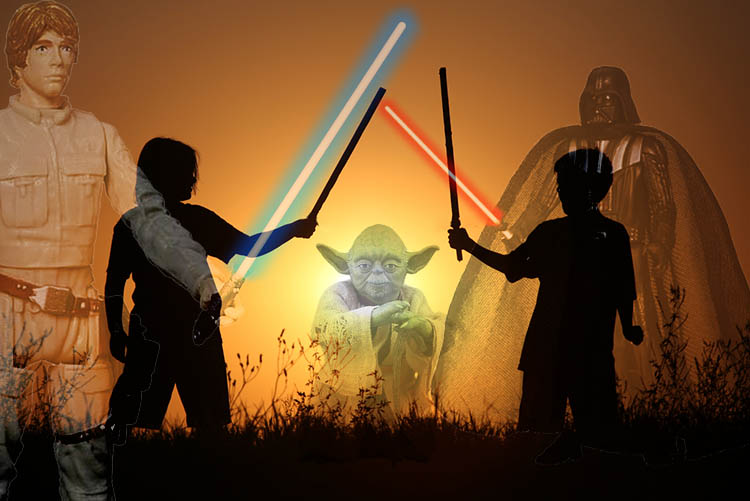 When you are young, a couple of broomstick handles and your imagination are all you really need..
When you are young, a couple of broomstick handles and your imagination are all you really need..Early versions of the official toy Lightsabers amounted to little more than an inflated tube atop a flashlight – which would frequently deflate when subjected to light use. Later versions had hard plastic blades with light-up capability, but between the mid 80’s and the mid 90’s no new toy Lightsabers were forthcoming.
In 1996 monolithic toy company Hasbro, who had purchased the rights to the official Lightsaber toys, released a set of new Lightsabers (in red and green) that would not only light up and extend but featured authentic sounds straight from the movies. These would evolve into later versions of the Hasbro Lightsaber in the 2000’s, which featured high-end sounds, durable hilts, and a new progressive light-up blade using an LED light strip – the most realistic Lightsaber to date. While these new lightsabers were beautiful and sounded great, even moderate contact could result in broken LEDs along the strip.
Clearly, the world needed a realistic Lightsaber that could stand up to the rigors of true Jedi combat. In other words, battle ready lightsabers..
New and Improved - Battle Ready Lightsabers
Enter the giants of the world of Battle Ready Lightsabers.
Over the last two decades there has been a slow emergence of several companies that started small, but quickly grew the third-party saber (called “sabers” so as to avoid copyright issues) world into a multi-million dollar industry. And the sabers they created were a step closer to being as “real” as the ones in the movies – no longer made of plastic, the handles were machined aircraft aluminum, and a sound board combined with a speaker created realistic sounds that responded to motion. The powerful LED that lit the blade was located in the handle, and the blades were made of strong plastic that could withstand heavy, repeated use.
These battle ready lightsabers quickly became the gold standard for collectors and cosplayers, and several companies emerged as the frontrunners in this new industry.
UltraSabers
VIDEO: Ultrasabers honest review
One of the first companies to start making Battle Ready lightsabers, Ultrasabers quickly became a popular choice for low-cost, upgradable saber hilts. Simple, empty hilts can run less than $60 up to over $200, though adding electronics, lights, sound, and in-hilt recharging (among other upgrades) can quickly push
the price up several hundred dollars.
Still, when it comes to solid, durable, and reliable, Ultrasabers remains one of the most popular companies out there for Star Wars fans – which is why they are one of the most commonly seen brands in Lightsaber clubs and Star Wars cosplay societies around the world.
SaberForge
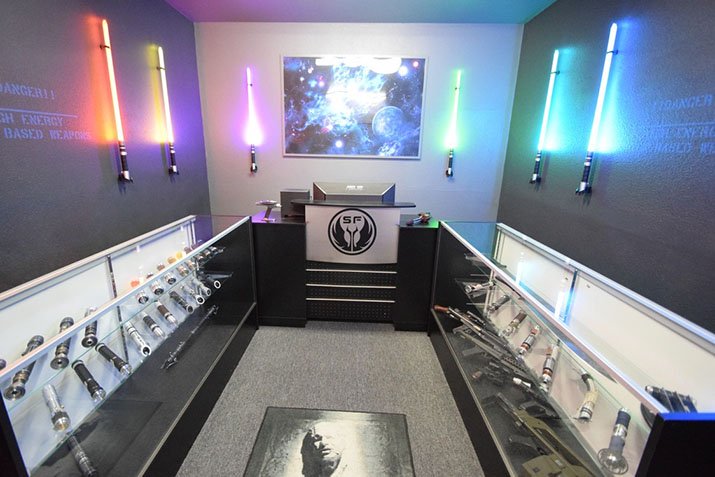 The Bricks and Mortar Saberforge shop
The Bricks and Mortar Saberforge shopFrom a tiny shop in the founder’s house, Saberforge grew into the definitive source for premium battle ready lightsabers on the market today.
Their unique and innovative designs, absolutely huge variety of options (including leather-wrapped hilts and even katana-style sabers with real ito), and brightest LEDs on the market put them head and shoulders above most of the sabers available today. Holding a Saberforge in your hand, you feel like you are holding a real Lightsaber.
Price-wise, they come in a little more expensive than some – but for the price, you get significantly more options including in-hilt recharging and premium sound and light options (typically costly upgrades to the base models for other brands). With a huge number of available hilts at different price levels, there is something for everyone in Saberforge’s stock.
RELATED ARTICLE: Interview with Philip Isherwood, Saberforge's founder and CEO
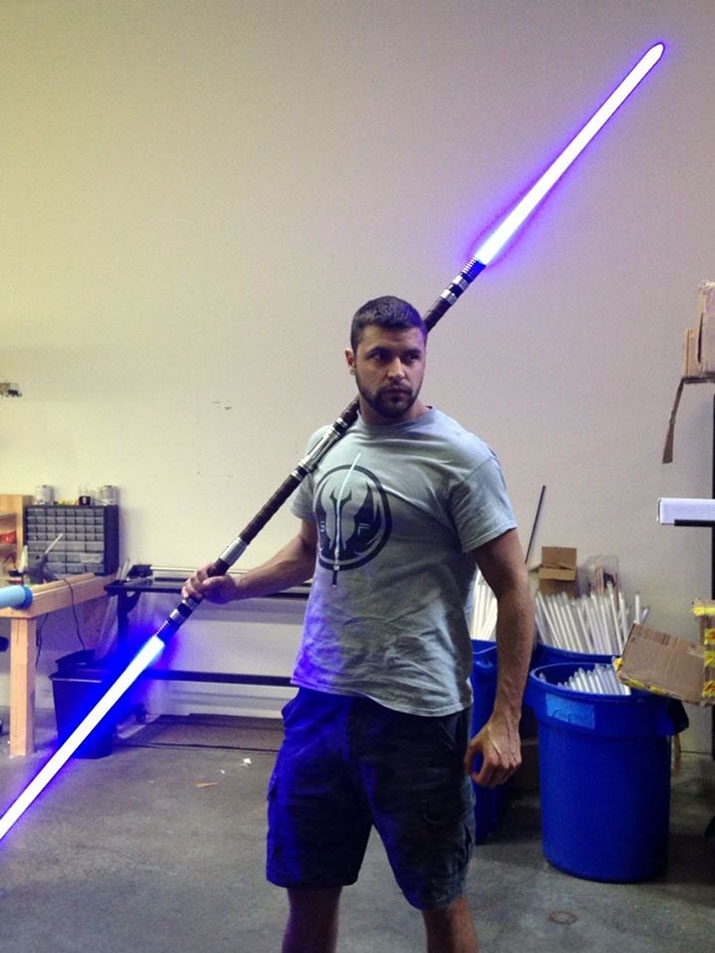 Phillip Isherwood, Saberforge CEO and founder
Phillip Isherwood, Saberforge CEO and founderSABERFORGE Reviews
Saberforge Custom Lightsaber
Here we review one of their champion level sparring blades. $520
Saberforge Custom Lightsaber # 2
A follow up review on a second lightsaber by Saber forge. $520
Many others
Many other companies exist in the third-party saber including Vader’s Vault, Electrum, and Kyberlight (famous for their modular, customizable saber designs). These companies typically move less sabers each year than their larger counterparts, but like custom swordsmiths this means they can invest more time in each saber they make - Vader’s Vault especially has a reputation for extremely high quality sabers made in small batches.
RELATED ARTICLE: Interview with Shon from Kyberlight
Kyberlight Review
Kyberlight
A good overview of Kyberlight Sabers, famous for their modular, customizable battle ready lightsabers.
Most affordable, toughest battle ready Lightsabers
Finally, the Sword Buyer’s Guide is taking its first steps into the world of Battle Ready Lightsabers. Partnering with Ryujin Swords, we have brought original saber designs to the market - starting with a similar version to the elite battle ready light sabers we have examined above - but made a super strong patent-pending polymer.
The first series were priced between $200-250 - below you can see some video testing of the early prototypes..
But after an initial trial run, it was decided to remove the sound feature - focusing on the strength and durability of the 'blades' only, setting each saber to a designated color - and making them available for a ridiculously low price of just $120 (but on special for $79!).
Conclusion
While not actually swords, Battle-Ready Lightsabers can be just as fun.
For Star Wars fans, holding the cool metal handle of one of these can make you feel like a Jedi, your trusty saber ready to face down a hoard of stormtroopers – or like an evil Sith, bent on domination and ruling the galaxy.
Whatever your motivation, these Battle-Ready Lightsabers can be incredibly enjoyable additions to your collection – and useful for training purposes (just don’t accidentally cut off someone’s hand, or they might turn to the Dark Side!).
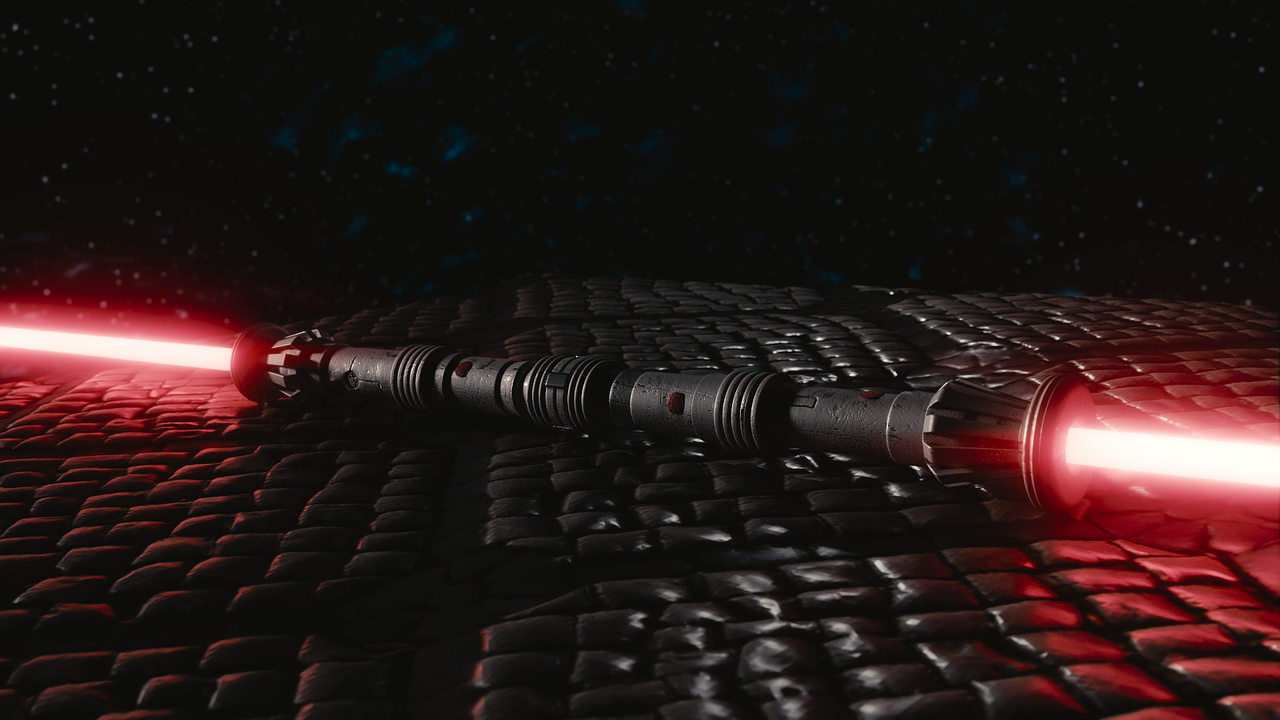
We hope this information on battle ready lightsabers has been helpful. To return to the SBG homepage from Battle Ready Lightsabers, click here

Buying Swords Online Can Be DANGEROUS!
Find the Best Swords in the:
Popular & Recommended ARTICLES

The ONLY true free online magazine for sword enthusiasts. Delivered once a month on the 1st day of the month, no filler and no BS, just the latest sword news & info delivered straight to your inbox.

